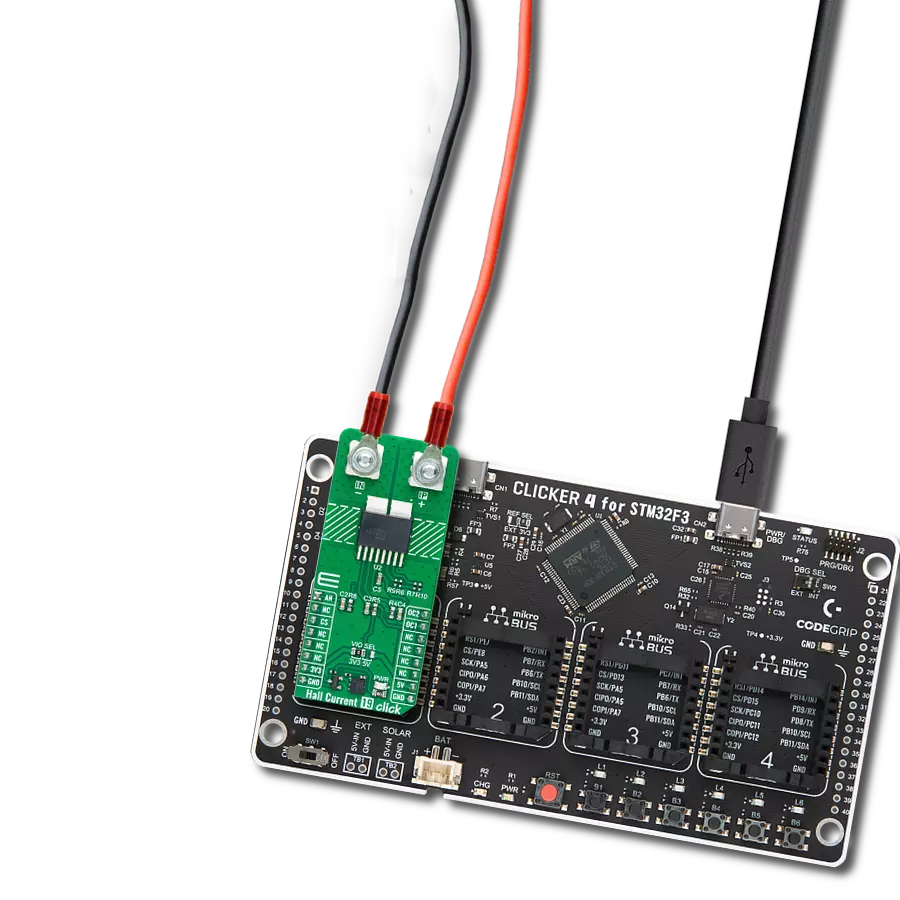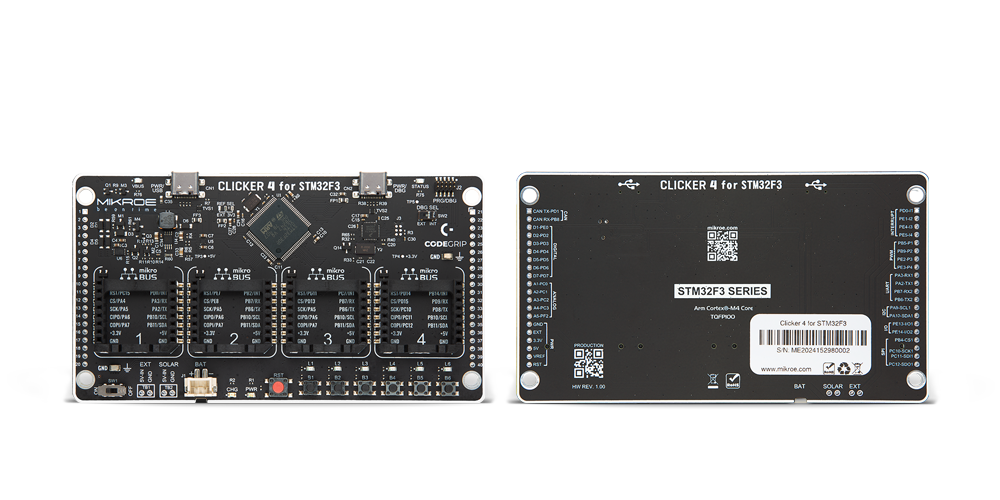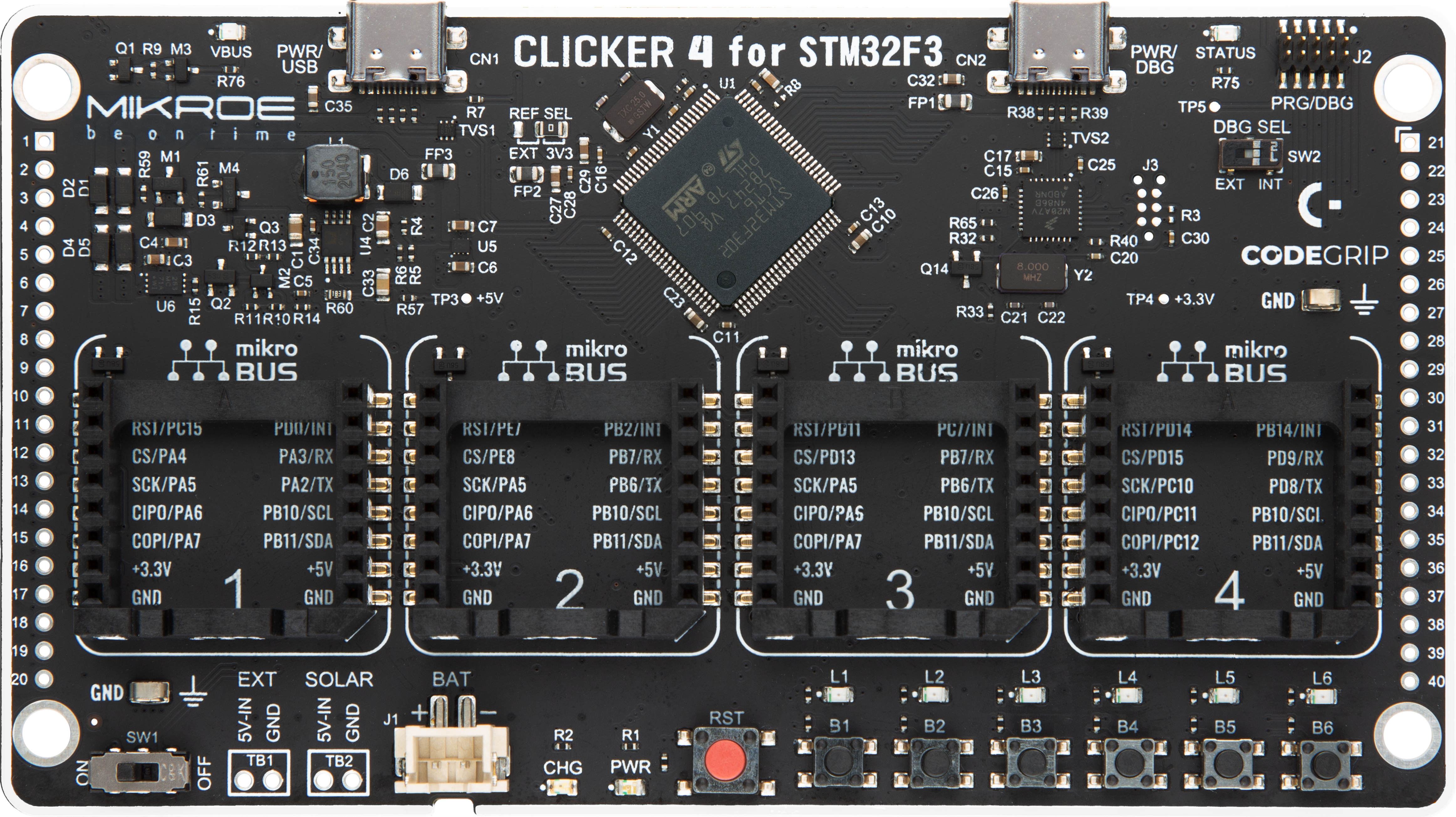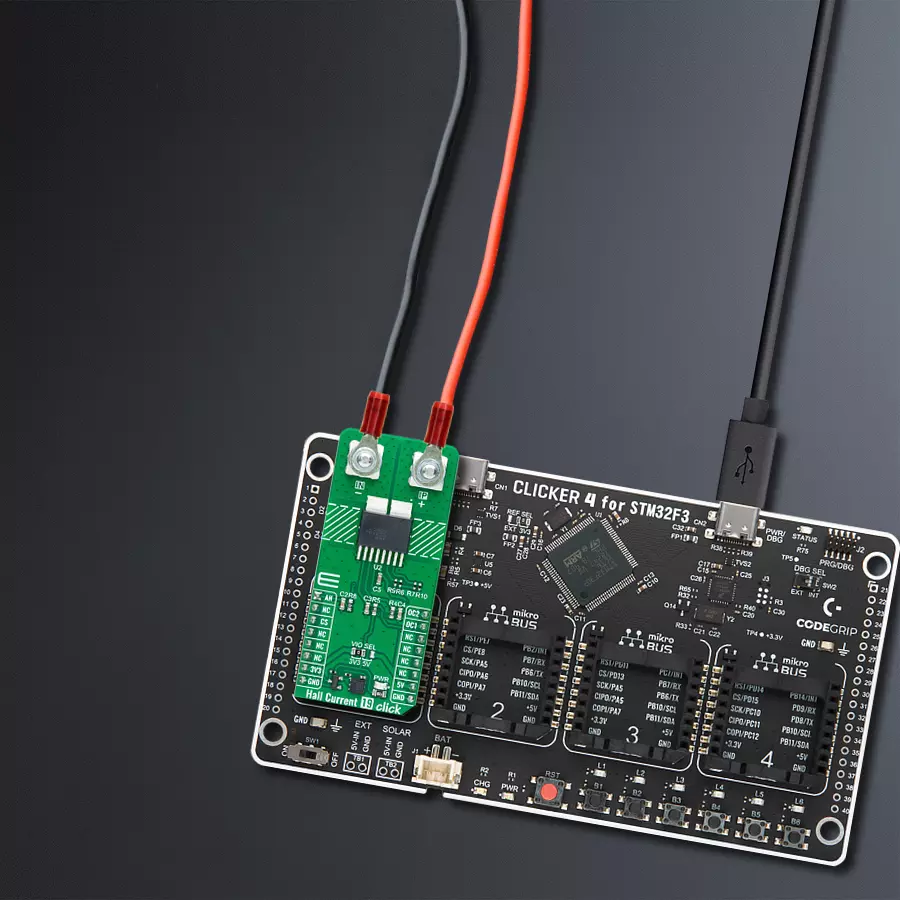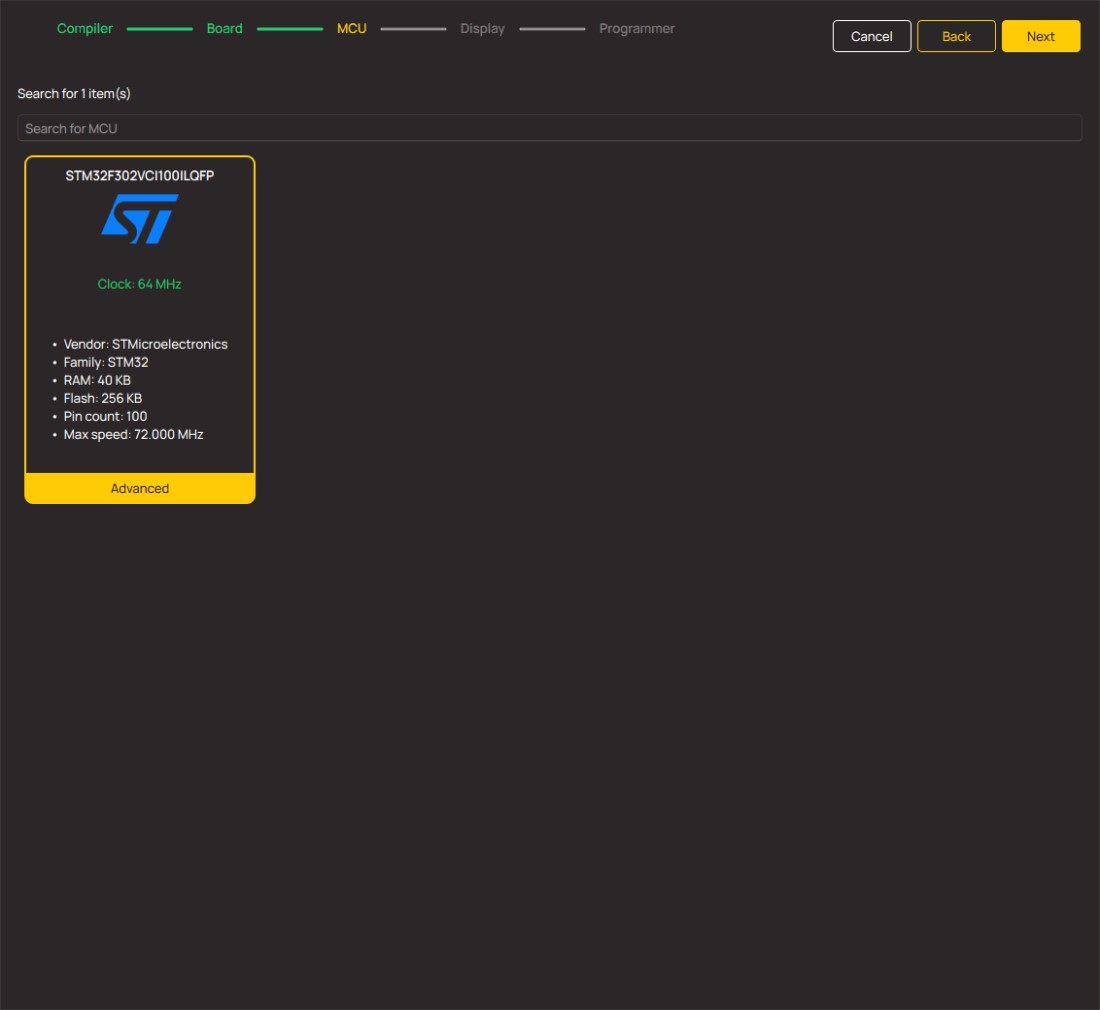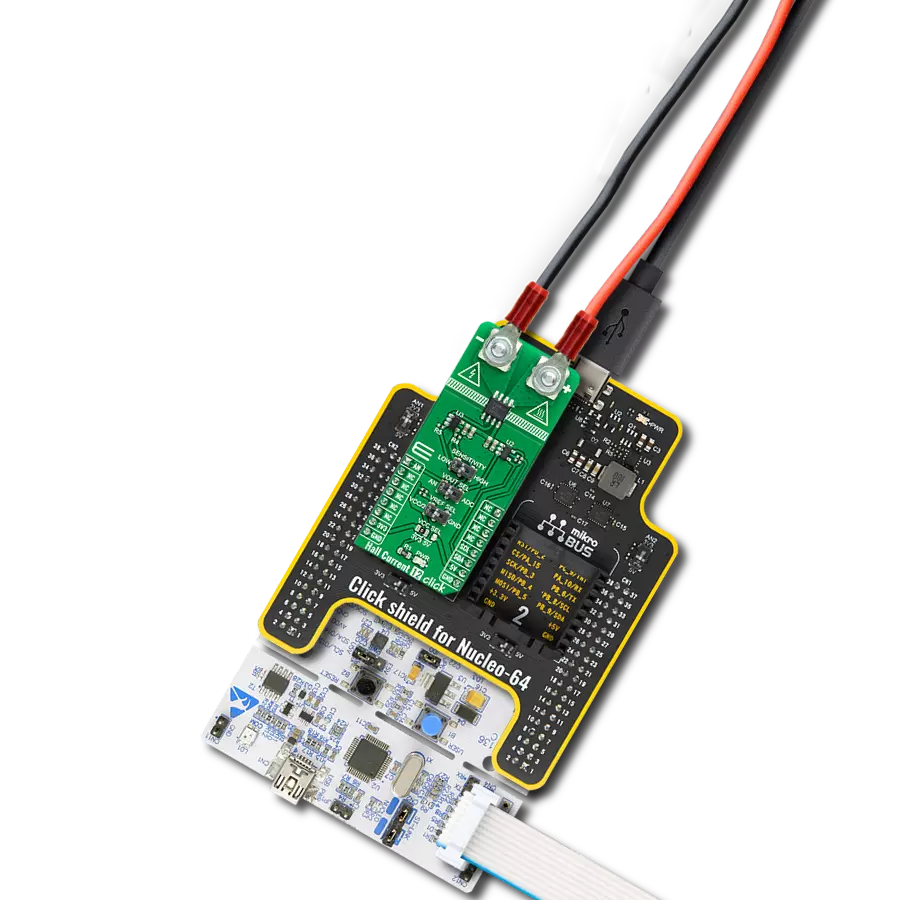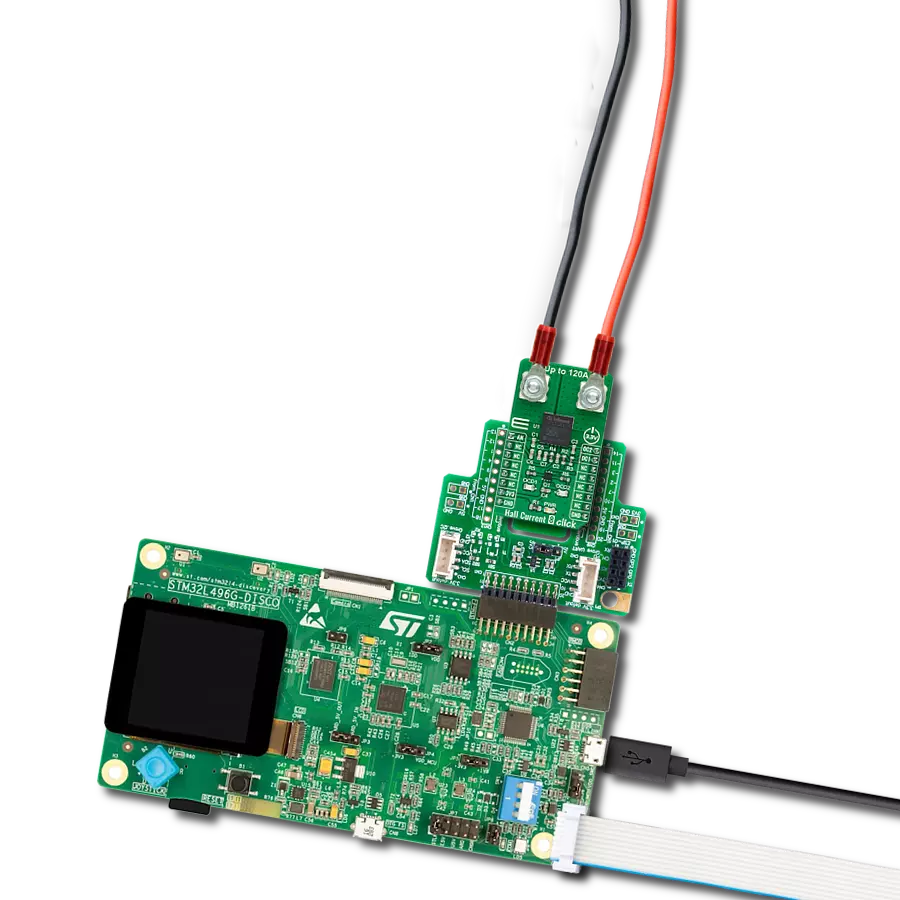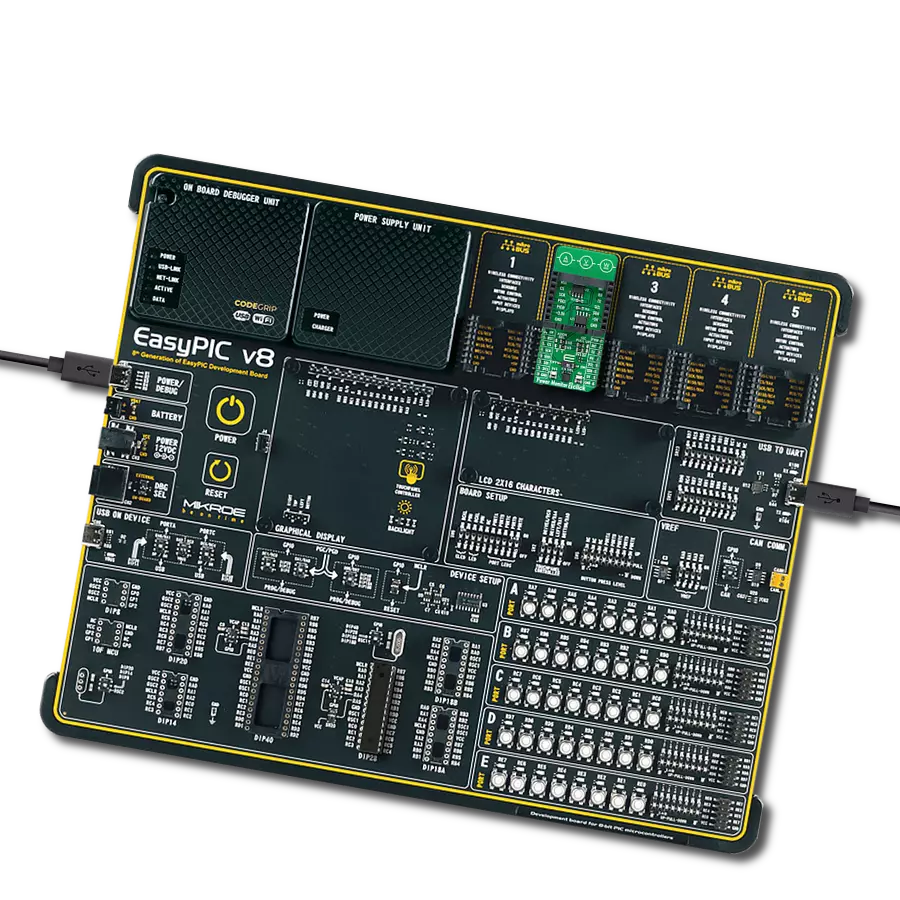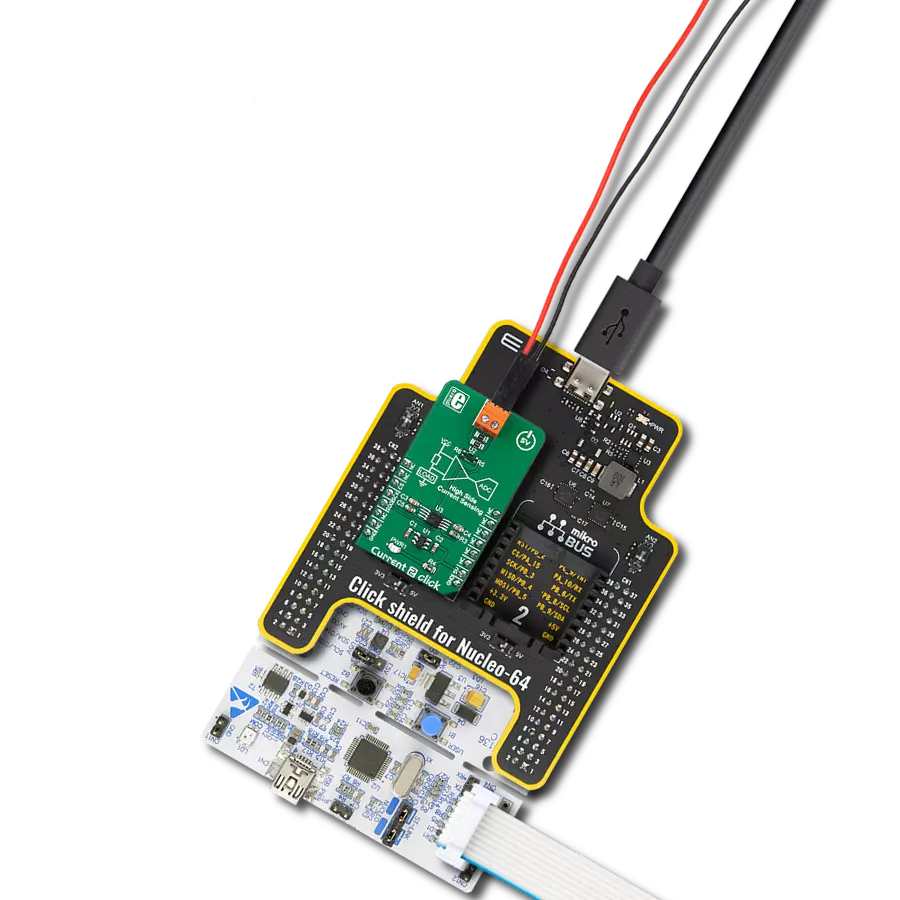Monitor current flow without physically interrupting the circuit
A
A
Hardware Overview
How does it work?
Hall Current 19 Click is based on the CZ3AG2, a coreless current sensor from AKM Semiconductor. This sensor uses Hall sensor technology to provide an analog voltage output proportional to the AC/DC current on the AN pin of the mikroBUS™ socket. Using a Group III-V semiconductor thin film as the Hall element, the CZ3AG2 ensures high-accuracy and high-speed current sensing. It also includes functions for reducing stray magnetic fields and dual overcurrent detection. Being UL 61800-5-1
safety compliant, the CZ3AG2-based Hall Current 19 Click is perfect for industrial AC drives, servo motors, UPS systems, general inverters, and power conditioners. As mentioned, this Click board™ is equipped with dual overcurrent detection capabilities on the OC1 and OC2 pins of the mikroBUS™ socket. Using voltage dividers R6/R9 and R7/R10, it sets precise current limits ranging from 7A to 17.5A. This ensures that any current value falling outside this specified range will be
promptly detected by the overcurrent detectors, providing reliable protection and accurate measurement. This Click board™ can operate with either 3.3V or 5V logic voltage levels selected via the VIO SEL jumper. This way, both 3.3V and 5V capable MCUs can use the communication lines properly. Also, this Click board™ comes equipped with a library containing easy-to-use functions and an example code that can be used as a reference for further development.

Features overview
Development board
Clicker 4 for STM32F3 is a compact development board designed as a complete solution, you can use it to quickly build your own gadgets with unique functionalities. Featuring a STM32F302VCT6, four mikroBUS™ sockets for Click boards™ connectivity, power managment, and more, it represents a perfect solution for the rapid development of many different types of applications. At its core, there is a STM32F302VCT6 MCU, a powerful microcontroller by STMicroelectronics, based on the high-
performance Arm® Cortex®-M4 32-bit processor core operating at up to 168 MHz frequency. It provides sufficient processing power for the most demanding tasks, allowing Clicker 4 to adapt to any specific application requirements. Besides two 1x20 pin headers, four improved mikroBUS™ sockets represent the most distinctive connectivity feature, allowing access to a huge base of Click boards™, growing on a daily basis. Each section of Clicker 4 is clearly marked, offering an intuitive and clean interface. This makes working with the development
board much simpler and thus, faster. The usability of Clicker 4 doesn’t end with its ability to accelerate the prototyping and application development stages: it is designed as a complete solution which can be implemented directly into any project, with no additional hardware modifications required. Four mounting holes [4.2mm/0.165”] at all four corners allow simple installation by using mounting screws. For most applications, a nice stylish casing is all that is needed to turn the Clicker 4 development board into a fully functional, custom design.
Microcontroller Overview
MCU Card / MCU
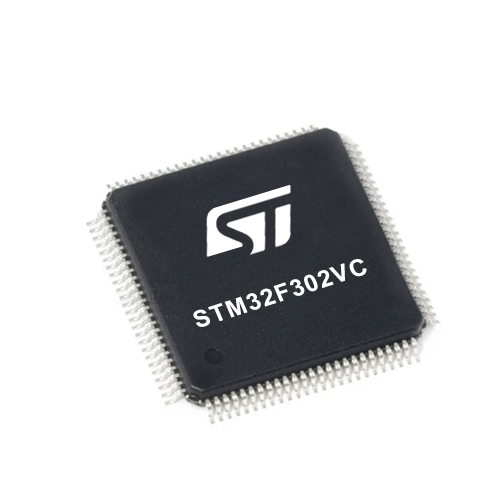
Architecture
ARM Cortex-M4
MCU Memory (KB)
256
Silicon Vendor
STMicroelectronics
Pin count
100
RAM (Bytes)
40960
Used MCU Pins
mikroBUS™ mapper
Take a closer look
Click board™ Schematic
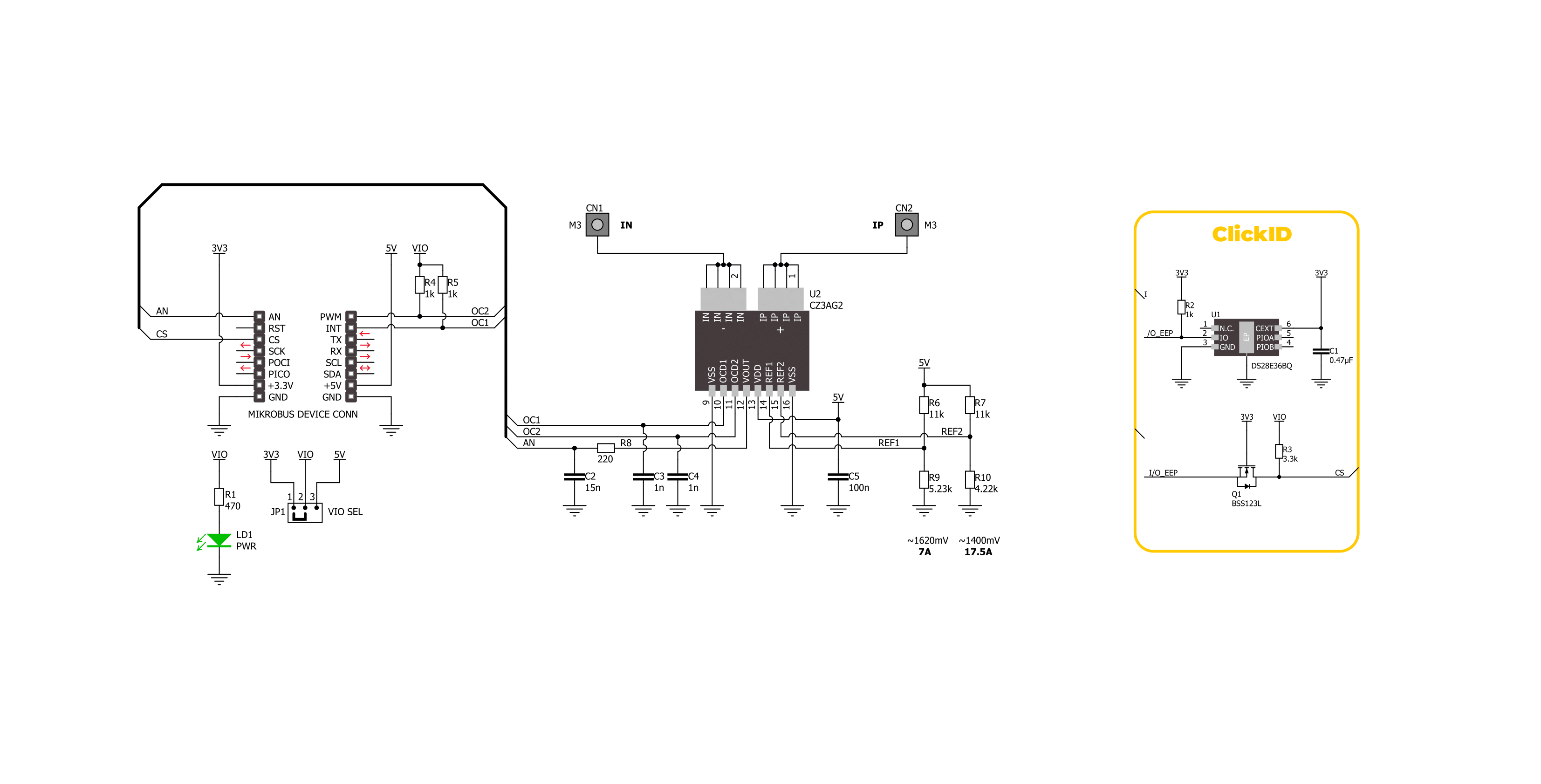
Step by step
Project assembly
Track your results in real time
Application Output
1. Application Output - In Debug mode, the 'Application Output' window enables real-time data monitoring, offering direct insight into execution results. Ensure proper data display by configuring the environment correctly using the provided tutorial.

2. UART Terminal - Use the UART Terminal to monitor data transmission via a USB to UART converter, allowing direct communication between the Click board™ and your development system. Configure the baud rate and other serial settings according to your project's requirements to ensure proper functionality. For step-by-step setup instructions, refer to the provided tutorial.

3. Plot Output - The Plot feature offers a powerful way to visualize real-time sensor data, enabling trend analysis, debugging, and comparison of multiple data points. To set it up correctly, follow the provided tutorial, which includes a step-by-step example of using the Plot feature to display Click board™ readings. To use the Plot feature in your code, use the function: plot(*insert_graph_name*, variable_name);. This is a general format, and it is up to the user to replace 'insert_graph_name' with the actual graph name and 'variable_name' with the parameter to be displayed.

Software Support
Library Description
This library contains API for Hall Current 19 Click driver.
Key functions:
hallcurrent19_get_oc2- This function is used to get state of the overcurrent 2 detection of the Hall Current 19 Clickhallcurrent19_set_zero_ref- This function sets the zero voltage reference of the Hall Current 19 Clickhallcurrent19_get_current- This function reads and calculate input current value of the Hall Current 19 Click
Open Source
Code example
The complete application code and a ready-to-use project are available through the NECTO Studio Package Manager for direct installation in the NECTO Studio. The application code can also be found on the MIKROE GitHub account.
/*!
* @file main.c
* @brief Hall Current 19 Click Example.
*
* # Description
* This example demonstrates the use of Hall Current 19 Click board
* by reading and displaying the current measurements.
*
* The demo application is composed of two sections :
*
* ## Application Init
* Initializes the driver and logger, and set the zero voltage reference.
*
* ## Application Task
* The demo application reads the current measurements [A] and displays the results.
* Results are being sent to the UART Terminal, where you can track their changes.
*
* @author Stefan Ilic
*
*/
#include "board.h"
#include "log.h"
#include "hallcurrent19.h"
static hallcurrent19_t hallcurrent19; /**< Hall Current 19 Click driver object. */
static log_t logger; /**< Logger object. */
void application_init ( void )
{
log_cfg_t log_cfg; /**< Logger config object. */
hallcurrent19_cfg_t hallcurrent19_cfg; /**< Click config object. */
/**
* Logger initialization.
* Default baud rate: 115200
* Default log level: LOG_LEVEL_DEBUG
* @note If USB_UART_RX and USB_UART_TX
* are defined as HAL_PIN_NC, you will
* need to define them manually for log to work.
* See @b LOG_MAP_USB_UART macro definition for detailed explanation.
*/
LOG_MAP_USB_UART( log_cfg );
log_init( &logger, &log_cfg );
log_info( &logger, " Application Init " );
// Click initialization.
hallcurrent19_cfg_setup( &hallcurrent19_cfg );
HALLCURRENT19_MAP_MIKROBUS( hallcurrent19_cfg, MIKROBUS_1 );
if ( ADC_ERROR == hallcurrent19_init( &hallcurrent19, &hallcurrent19_cfg ) )
{
log_error( &logger, " Communication init." );
for ( ; ; );
}
log_printf( &logger, " Turn off the load current in the following 5 sec.\r\n" );
Delay_ms ( 1000 );
Delay_ms ( 1000 );
Delay_ms ( 1000 );
Delay_ms ( 1000 );
Delay_ms ( 1000 );
if ( HALLCURRENT19_OK == hallcurrent19_set_zero_ref( &hallcurrent19 ) )
{
log_printf( &logger, " Process complete!\r\n");
}
else
{
log_error( &logger, " Zero reference." );
for ( ; ; );
}
log_info( &logger, " Application Task " );
}
void application_task ( void )
{
float voltage = 0;
if ( HALLCURRENT19_OK == hallcurrent19_get_current ( &hallcurrent19, &voltage ) )
{
log_printf( &logger, " Current : %.3f[A]\r\n\n", voltage );
Delay_ms ( 1000 );
}
if ( HALLCURRENT19_OCD_ACTIVE == hallcurrent19_get_oc1( &hallcurrent19 ) )
{
log_printf( &logger, " Current over 7A \r\n" );
}
if ( HALLCURRENT19_OCD_ACTIVE == hallcurrent19_get_oc2( &hallcurrent19 ) )
{
log_printf( &logger, " Current over 17.5A \r\n" );
}
}
int main ( void )
{
/* Do not remove this line or clock might not be set correctly. */
#ifdef PREINIT_SUPPORTED
preinit();
#endif
application_init( );
for ( ; ; )
{
application_task( );
}
return 0;
}
// ------------------------------------------------------------------------ END
Additional Support
Resources
Category:Current sensor
